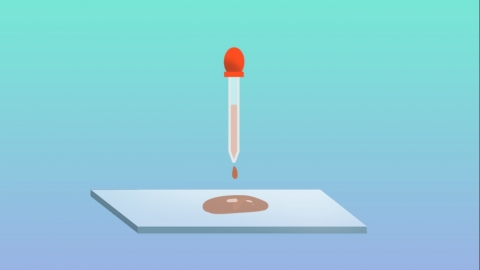Why is blood drawn when getting double eyelid surgery?
Generally, double eyelid surgery refers to blepharoplasty, which is a surgical procedure that creates adhesion between the eyelid skin and the tarsal plate or muscles, forming a crease in the eyelid. The usual reference price for blepharoplasty ranges from 2000 to 6000 yuan per session. Improvement is typically noticeable 3-4 weeks after surgery, although symptoms such as localized swelling and pain may occur. Blood tests before blepharoplasty may be conducted to determine the patient's blood type, screen for infectious diseases, assess coagulation function, check for anemia and diabetes, and detect potential allergic reactions. Detailed explanations are as follows:

1. Determine the patient's blood type
Blood tests help doctors identify the patient's blood type, which is a routine preoperative preparation. During surgery, knowing the patient's blood type ensures that the correct blood type can be provided if a blood transfusion is needed, avoiding transfusion reactions.
2. Screen for infectious diseases
Blood tests allow doctors to determine whether the patient has infectious diseases such as hepatitis B, acquired immunodeficiency syndrome (AIDS), or syphilis. These conditions may increase the risk of infection during surgery or affect postoperative recovery. Therefore, understanding the patient's infectious disease status in advance helps doctors take appropriate preventive measures to ensure surgical safety.
3. Assess coagulation function
Blood tests allow doctors to evaluate the patient's hemostatic capacity. If coagulation function is abnormal, it may lead to excessive bleeding or difficulty in hemostasis during surgery, increasing surgical risks. Therefore, assessing coagulation function helps doctors adequately prepare for possible bleeding during surgery.
4. Check for anemia and diabetes
Anemia may reduce blood viscosity and impair wound healing, while diabetic patients are more prone to postoperative infections and slower wound healing. Blood tests allow doctors to promptly detect these issues and make necessary adjustments and treatments before surgery to ensure surgical safety and effectiveness.
5. Detect allergic reactions
Some patients may be allergic to certain anesthetic drugs or surgical materials. Blood tests for allergens enable doctors to understand the patient's allergic status in advance and take appropriate preventive measures before surgery, such as changing anesthetic agents or using alternative sedation methods, to avoid allergic reactions.
After undergoing blepharoplasty, the eyelid area should be kept clean and dry. Avoid getting the wound wet when washing the face, and refrain from touching the wound area with your hands to prevent infection.







